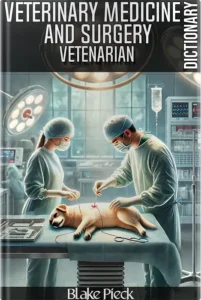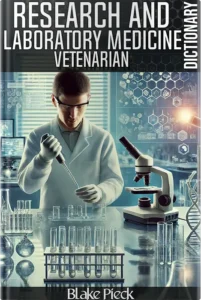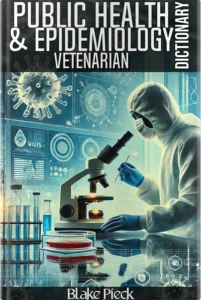The Essential “Systemic Anatomy – Human Anatomy Part 8 Dictionary”
Embark on an enlightening journey through the intricate systems of the human body with our comprehensive guide, “Systemic Anatomy – Human Anatomy Part 8 Dictionary.” This dictionary offers detailed information on the anatomical structures and functions of the major systems that sustain life. Whether you’re a student, healthcare professional, or anatomy enthusiast, this dictionary is an invaluable resource for understanding the complex structures and functions of the human body’s major systems.
The “Systemic Anatomy – Human Anatomy Part 8 Dictionary” is an essential resource for anyone interested in the study of anatomical structures and functions of the human body’s major systems. Whether you’re a student, healthcare professional, educator, or anatomy enthusiast, this dictionary provides a comprehensive guide to the systemic anatomy of the skeletal, muscular, cardiovascular, respiratory, digestive, nervous, endocrine, lymphatic, urinary, and reproductive systems. By exploring the detailed entries, you can gain a deeper understanding of systemic anatomy, improve your diagnostic and clinical skills, and enhance your appreciation for the intricate details of the human body. Invest in the “Systemic Anatomy Dictionary” and embark on an enlightening journey into the fascinating world of human anatomy.
Why Invest in the “Systemic Anatomy Dictionary”?
1. Comprehensive Coverage of All Major Systems
The “Systemic Anatomy Dictionary” provides in-depth exploration of each major system within the human body. It covers:
- Skeletal System: Detailed descriptions of bones, their structure, functions, and classifications, including the axial and appendicular skeletons and the joints connecting these bones.
- Muscular System: Information on muscle types (skeletal, smooth, and cardiac), their structures, functions, and roles in movement, posture, and heat production.
- Cardiovascular System: Anatomy of the heart, major blood vessels, and blood flow pathways through the body.
- Respiratory System: Structures of the respiratory organs, mechanics of breathing, and gas exchange in the lungs.
- Digestive System: Anatomy and functions of the digestive organs, processes of digestion and absorption, and nutrient metabolism.
- Nervous System: Central and peripheral nervous system anatomy, functions of neurons and glial cells, and brain and spinal cord organization.
- Endocrine System: Glands and hormones of the endocrine system and their roles in regulating bodily functions.
- Lymphatic System: Anatomy of lymphatic vessels, lymph nodes, spleen, thymus gland, and their roles in immune function.
- Urinary System: Structures of the urinary organs, urine formation, and the system’s role in maintaining fluid balance and excreting waste.
- Reproductive System: Anatomy of male and female reproductive organs, processes of gamete production and fertilization, and the role of the reproductive system in reproduction.
2. Detailed and Accessible Entries
Each entry in the dictionary is crafted to provide clear, concise, and detailed information. This ensures that readers can easily understand complex anatomical concepts and their clinical relevance. The structured approach makes the dictionary a valuable reference tool for both learning and professional practice.
3. Essential for Students and Educators
For students in medicine, nursing, physiotherapy, and other health-related fields, this dictionary is an essential study aid. It supports coursework, research projects, and exam preparation by providing precise definitions and detailed explanations of anatomical concepts. Educators can also use this dictionary as a teaching tool to provide clear and accurate information, enhancing the learning experience for their students.
4. Valuable for Healthcare Professionals
Healthcare professionals, including doctors, nurses, and therapists, will find this dictionary an invaluable reference for their work. It offers detailed insights into the anatomical structures relevant to clinical practice, supporting accurate diagnosis, treatment planning, and patient care. By enhancing their understanding of systemic anatomy, healthcare professionals can improve their clinical skills and provide better care.
5. Enhancing Diagnostic and Clinical Skills
Understanding systemic anatomy is crucial for accurate diagnosis and effective treatment. This dictionary helps readers interpret clinical findings by explaining the anatomical basis of various conditions. It provides the knowledge needed to identify anatomical landmarks, understand pathological changes, and make informed clinical decisions, ultimately improving patient outcomes.
Key Sections of the “Systemic Anatomy Dictionary”
1. Skeletal System
This section covers the bones of the human body, including their structure, function, and classification. Learn about:
- Axial Skeleton: Detailed descriptions of the skull, vertebral column, and rib cage.
- Appendicular Skeleton: Information on the bones of the limbs and girdles.
- Joints: Exploration of the different types of joints and their roles in movement and stability.
2. Muscular System
This section focuses on the muscles of the human body, including their structure, function, and classification. Discover:
- Skeletal Muscles: The muscles responsible for voluntary movements.
- Smooth Muscles: Muscles found in the walls of internal organs.
- Cardiac Muscles: The muscle tissue of the heart.
- Functions: Roles of muscles in movement, posture, and heat production.
3. Cardiovascular System
Explore the heart and blood vessels of the human body, including their structure, function, and circulation. Learn about:
- Heart Anatomy: Detailed descriptions of the heart’s chambers, valves, and associated structures.
- Blood Vessels: Information on arteries, veins, and capillaries.
- Circulation: Pathways of blood flow through the body and the role of the cardiovascular system in transporting nutrients and oxygen.
4. Respiratory System
This section covers the organs of the respiratory system, including the lungs, trachea, bronchi, and diaphragm. Understand:
- Respiratory Tract Anatomy: Structures of the respiratory organs and their roles in breathing.
- Mechanics of Breathing: How air is moved in and out of the lungs.
- Gas Exchange: The process of oxygen and carbon dioxide exchange in the lungs.
5. Digestive System
Discover the organs of the digestive system, including the mouth, esophagus, stomach, intestines, liver, and pancreas. Learn about:
- Digestive Tract Anatomy: Structures of the digestive organs and their roles in digestion.
- Digestion and Absorption: Processes involved in breaking down food and absorbing nutrients.
- Metabolism: The role of the digestive system in nutrient metabolism.
6. Nervous System
This section covers the central nervous system (brain and spinal cord) and the peripheral nervous system (nerves and ganglia). Explore:
- Nervous System Anatomy: Structures of the brain, spinal cord, and peripheral nerves.
- Neurons and Glial Cells: Functions of the nervous system’s cells.
- Organization: How the brain and spinal cord are organized and their roles in controlling the body.
7. Endocrine System
Learn about the glands of the endocrine system, including the pituitary, thyroid, parathyroid, adrenal, pancreas, and gonads. Understand:
- Endocrine Glands: Anatomy and functions of the endocrine glands.
- Hormones: Hormones produced by each gland and their roles in regulating bodily functions.
8. Lymphatic System
This section covers the lymphatic vessels, lymph nodes, spleen, and thymus gland. Discover:
- Lymphatic Anatomy: Structures of the lymphatic system and their roles in immune function.
- Lymph Circulation: How lymph circulates through the body.
9. Urinary System
Explore the organs of the urinary system, including the kidneys, ureters, bladder, and urethra. Learn about:
- Urinary Tract Anatomy: Structures of the urinary organs and their roles in urine formation.
- Fluid Balance: The role of the urinary system in maintaining fluid balance and excreting waste.
10. Reproductive System
This section covers the organs of the male and female reproductive systems, including the gonads (testes and ovaries), ducts (epididymis, vas deferens, fallopian tubes), and external genitalia. Understand:
- Reproductive Anatomy: Structures of the reproductive organs and their roles in reproduction.
- Gamete Production and Fertilization: Processes involved in producing sperm and eggs and fertilization.
Who Can Benefit from the “Systemic Anatomy Dictionary”?
1. Students
Students in medical, nursing, physiotherapy, and other health-related fields will find this dictionary an essential resource. It provides clear explanations and detailed descriptions of systemic anatomy, supporting their academic and professional growth.
2. Healthcare Professionals
Healthcare professionals, including doctors, nurses, and therapists, will benefit from the comprehensive coverage of anatomical structures relevant to clinical practice. This dictionary supports accurate diagnosis, treatment planning, and patient care.
3. Educators
Educators can use this dictionary as a teaching tool to provide accurate and detailed information on systemic anatomy. It enhances their ability to convey complex concepts to students, enriching the educational experience.
4. General Readers
Anyone with an interest in human anatomy and the body’s systems will appreciate this dictionary. It offers a fascinating glimpse into the complex organization of the human body, making it an engaging and educational read for general audiences.





















